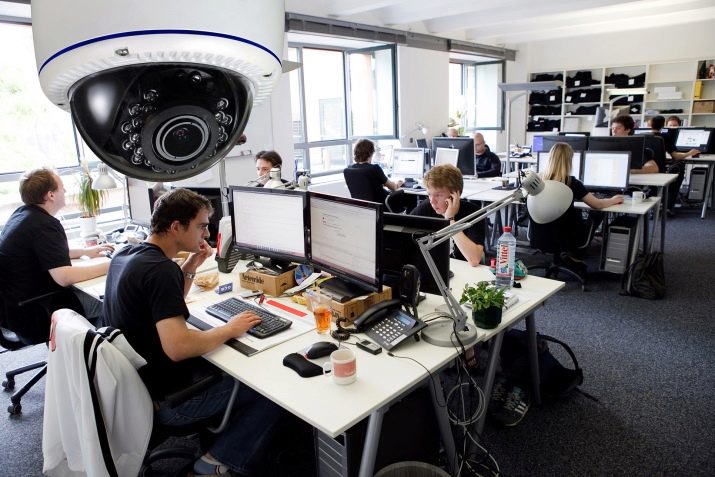Each person, to one degree or another, can consider himself a programmer, as he plans for himself certain life situations, his time and sequence of actions, unconsciously adjusting his actions to certain algorithms.
Professional programmers are committed to transferring life tasks to a computer-understandable language, coding them in various languages and creating algorithms for computer actions that mimic human thinking.
What are system programmers?
System programmers include specialists, developing and coding components of operating systems, device drivers and software systems that are directly related to the core of the system. They provide the interconnection of all parts of the operating system so that it works as a single organism. Also on the shoulders of the system engineers are all actions with databases: from development to administration.
In organizations, as a rule, a system programmer combines the positions of a system administrator and a software engineer, having skills in working with various types of computer and microcontroller equipment, including robotics and CNC machines.

In system programming, there are several significant features associated with software development that require the following skills from an employee:
- knowledge of programming languages of low (Assembler) and intermediate (C) levels along with high-level languages (C ++, Python, etc.);
- database administration (SQL, Oracle, etc.);
- knowledge of the hardware of computer equipment;
- knowledge of microcontrollers;
- ability to regular self-training.

The activities of the system specialist are not limited to ensuring the coordinated work of the components of a separate computer complex, but also extend to the smooth operation of both internal and external networks and network devices. This provides good knowledge of building computer networks, network data transfer protocols and server applications.
The systematic approach from applied programming is distinguished by a number of features that affect the programmer’s activities and thinking, which requires emphasis on only one of these specializations.

Application types
If system programming requires engineering skills, which is typical for the male part of the population, then applied is mainly focused on knowledge of programming languages, knowledge of the most used algorithms and application of the design component, which is equally suitable for girls.
Application programming (application programming) - the development and debugging of software applications adapted for the simple computer user. These include almost all applications to support specific activities (engineering and accounting programs, text, sound and video editors, etc.).
The list of functional purposes of applied software covers almost all types of human activity.

According to the Russian classifier of professional activity, specialty programmer assigned code 25857.
Specialists associated with application programming should have the following knowledge and skills:
- speak several high-level languages (C ++, Python, Java, etc.);
- be able to compose algorithms using procedural and object-oriented (OOP) programming approaches;
- have skills in using various IDE (Integrated Development Environment) - an integrated development environment;
- be able to produce high-quality testing and debugging of the created software.

There are the following conditional levels for assessing the professionalism of applied programmers (ascending).
- Junior - This is the initial level with a minimum threshold of knowledge and skills for entry, that is, the presence of minimal practical experience and theoretical knowledge. At this stage, the programmer is assigned standard tasks for encoding individual components, allowing the development (GUI) of standard user interfaces and web sites by templates. He is also entrusted with all the work related to drawing, including front-end development of web resources (the appearance of sites as they appear in browsers).
- Middle - The most significant part of all programmers is professionals in their field who have vast experience in practical work and a vast theoretical base. As a rule, they know several programming languages and can skillfully manipulate databases, as well as successfully debug their part of the generated code. This type includes good performers who can write simple and understandable code to perform specific tasks. The middle level also provides for back-end development skills (software development for the server side of a web resource).
- Senior - This is the top step of the “food chain software environment”. Professionally, this variety combines the knowledge and skills of Middle-specialists and the ability to generate ideas using a non-standard approach. Specialists of this class are able to work with a large team as architects and programmers at the same time, creating a single software whole from pieces of code of performers, testing and finalizing it before releasing the final product. In fact, this level provides for the possession of a number of related professions, such as a debugger and software architect.
According to the all-Russian classifier, the code 0 is assigned to the embedded application programs, and 02 to the system ones.

Testers and technical support
A tester, or software product testing engineer, monitors the quality of the software being created. Along with finding errors, it monitors the speed and quality of code execution. Having discovered the error, he fixes it and passes the data back to the developers to fix it.
To work as a tester, you need minimal skills and knowledge in the IT field, so this profession is considered one of the initial software development entries.

Competent Tester Activities significantly saves the financial and time resources of the company for the development of a software product. Soft is tested in various ways in stages, creating a bug report to developers. The tester must have a good knowledge of the goals and functionality of the product being created. Along with functionality, it should evaluate usability from the point of view of the user and give developers appropriate recommendations.
There are many types of validation. For example, a test for compliance of a product’s functionality with its calculated load on hardware and other components. It also checks the functionality of the databases when entering and destroying data, as well as checking for security conditions - user authentication.

The testing engineer checks the compliance of the code with all the declared technical data and finds bugs - errors.
The duties of the tester also include the preparation of technical documentation for the product under test. They also report and develop test scripts and tools. These engineers test the software product in two modes:
- alpha testing - a product under development;
- beta testing is the first version of the finished product.

Also, specialists in this profile, as a rule, provide technical support for web resources, answering questions and giving recommendations to users in an interactive mode. The indicated duties of the tester consist of the following steps:
- testing and analysis;
- preparation of technical reports and debugging.
This type of activity requires attention and ingenuity and is considered a good springboard for a career in IT technology.

Similar professions
There are many types of programming: from writing software for microcontrollers and mobile applications to creating compilers and entire operating systems. There are also quite a lot of similar programmer professions: from mathematical calculations and algorithm development to creating the architecture of large projects whose codes are compiled in various programming languages. Participants in the creation of the software product are: scriptwriters, programmers, coders, designers, layout designers, debuggers, translators and architects.
Specialists in the field for which the product is created may also be involved: mathematicians, physicists, engineers, etc.

It is important to attract potential users at the stage of preparation of the project and its testing, so that in the process of creation they take into account their recommendations for the convenience of the user. At the preparatory stage, the interaction of the algorithm creator, designer and potential consumer is necessary in order to determine the necessary functionality and create a user-friendly interface.
In the process of creating the algorithm, the participation of its developer, encoders of program modules and the project architect is necessary. And when developing web applications, the involvement of a designer and HTML coder is simply necessary.

Business analyst In fact, it translates the requirements and wishes of the customer into a language that the developers understand.The customer, as a rule, sets the task non-specifically, not knowing the intricacies of the software process, so the business analyst, after listening to the wishes of the client, creates a formal description of the project, forming it in the form of a technical task. This work should combine the customer’s business logic with the possibilities of real implementation.

All specified specialists must at least navigate in related professions, so that in the development process there is no misunderstanding between specialists. Ideally, a designer should have some knowledge of HTML layout and master Photoshop skills, and an encoder should be able to work with several programming languages and master the art of debugging. It’s not bad at all when programmers have mastered both mathematical techniques and the architectural art of collecting and linking program modules written in different programming languages.
A programmer’s career can be formed in two main areas: increasing professionalism in the selected segment of product creation and in managerial improvement. The best architects, project managers and IT directors come out of the programmer environment, as they know the entire “kitchen” of software developments from the inside.










